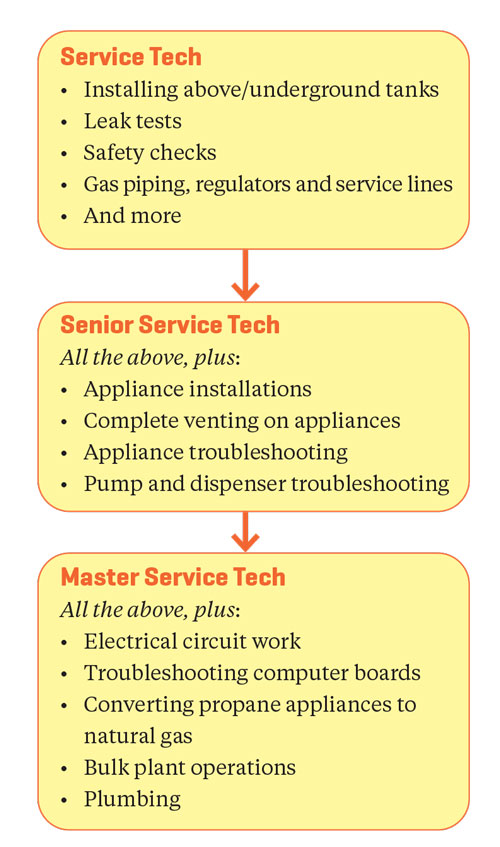
Employee recruitment remains an important focus for the future of the propane industry, but there is another issue that companies cannot lose sight of: employee retention.
According to LinkedIn, the average cost to replace an employee is 33% of their annual salary. In a specialized industry, such as propane, the amount of training each field employee receives is not only a monetary expense but also a large time commitment. Once this initial investment is made, one way to keep employees engaged with their employer is to continue to offer growth opportunities throughout their careers.
Blossman Gas created Blossman University to not only promote a safer industry but also to invest in employees after the initial onboarding. Housed in a 15,000-square-foot training center in Ocean Springs, Mississippi, the facility’s education opportunities include technical training, customer service, defensive driver training, computer software training, sales training and more. If employees are unable to travel, there is also a learning management system that provides digital monthly classes. Topics vary from general workplace safety to customer service to more specialized topics based on job description and responsibilities.
In addition to educational opportunities, career growth pathways propel employees forward in their careers should they wish to do so. One example of that is the master service technician program. After an initial training as a service technician, employees can choose to continue through a tiered training program that takes them from a service technician position to a senior service technician position, all the way to a master service technician. The process takes about three years, and there is a progression of skill sets and tests taken at each level, all accredited through the Propane Education & Research Council’s (PERC) training materials. The three-tiered program is modularized, offering elective classes to follow a particular career path of interest in addition to the basic requirements.
 To illustrate the progression, some of the requirements of each position are listed in the flowchart to the right.
To illustrate the progression, some of the requirements of each position are listed in the flowchart to the right.
The PERC Learning Center is another resource available to employers to foster employee growth. Not only are safety classes available, but there is an array of market- and industry-focused trainings, in addition to the webinars put on by subject matter experts and staff that PERC provides to the industry, available on their website. PERC continues to be a resource for employee recruitment as well, with programs such as the Technical School Grant program offering schools up to $10,000 to incorporate provided propane curriculum and equipment at their school or community college.
Recently, the propane industry invented creative training and growth opportunities, with innovative programs, such as the Southeast Propane Alliance Technical Education Center (SEPATEC), offering training opportunities for new and current employees of the propane industry. According to their website, “Training at SEPATEC isn’t just for newcomers to the propane industry. Our [Certified Employee Training Program] course is designed to help you get the certification that will help you start or advance in the propane business.” Allowing your company’s employees access to these trainings enforces your commitment to their success.
Overall, to retain employees, there must be opportunities for career growth, skill development and financial development. PERC, state associations and companies are investing in creative ways to help employees achieve their individual goals, all while creating a stronger, more well-rounded industry for the future.


